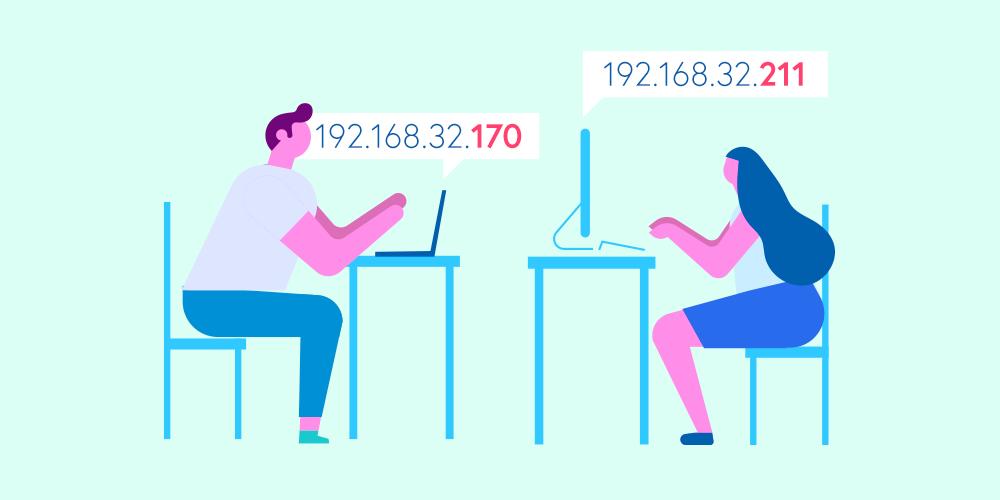Let us first look at the fundamentals: what is an IP address?
An IP address identifies all Internet-connected devices; in addition, it identifies where letters, packs, and other goods should be delivered from our physical addresses. There are two variants of IP addresses which are available as IPv4 (old) and IPv6 (new) under which we have a static or dynamic IP address.

Static IP addresses never change, which means they are permanent IPs and allow remote computers to contact each other reliably and straightforwardly. Static IP contain some of basic information concerning the computer’s Internet service provider and its continent, country, and town. IP addresses which are static comes with an additional cost.
On the other hand, dynamic IPs are temporarily allocated when a computer connects to a network. And are usually taken from an IP pool shared by a computer network. Usually dynamic IP addresses are cheaper and most consumer level ISPs uses dynamic one.
IP rotation is a procedure in which assigned IP addresses randomly on scheduled intervals are distributed to a device.
For instance: An IP address from an IP pool gets attached automatically when a connection is initiated via an Internet Service Provider (ISP). The ISP will distribute the next available IP address as soon as the disconnection and reconnection take place.
The ISP rotates the IP address because they generally have more users at their disposal than IP addresses. Therefore, when a specific user withdraws, the ISP will bring the most recently used IP address of the user back to their IP address pool, ensuring the synchronization of existing resources.
But how are they assigned?
Since each computer is connected to the net, each IP address must be unique. How do these addresses be assigned to each computer?
Well, it is a rule for each device that has its unique IP address connected to the internet. And in two kinds, they are assigned: dynamic or static.
While a trick uses sharing a single IP address for multiple computers, this is a router.
You are assigned static IPs by the internet service provider. And you are, of course, not able to manually configure your PC or another device to meet a specific address. However, most people have to configure their devices in most cases. So how do you get your own IPs?
Your computer broadcasts a unique dynamic IP address to the network using a Dynamic Host Configuration Protocol (DHCP). The IP address that your PC configured to utilize is then replied to by your Internet service provider.
In most cases, when your PC needs to be defined by other computer systems to connect to it, static IP addresses are used. On the other hand, dynamically assigned IP addresses, such as surfing and reading emails, can be used for private applications.
You can also use a single IP address to identify all devices via the internet if you have multiple devices connected to the internet. How can that be? A DHCP server between internet service providers that distribute local IPs and your internet devices is a router, a device with a unique IP. When traffic comes into and out of the router, the services IP addresses are translated into the assigned external IP address, and the data packet into the right device is routed. So the router of the name came to the location.
And what is IP rotation?
IP rotation is a systematic process by which an administrator for the random or configurable distribution to the right devices of assigned IPs.
When a user connects with their provider, an IP from a pool of IPs is assigned to them. Her internet connection remains with her IP address until a breakdown takes place. If so, the ISP will assign the user the next IP address available from the pool, so a transparent IP address rotation process is provided.
IP address rotation of outgoing traffic is observed since the source of IP is the primary basis on which all forms of internet destinations are based.
Rotating IP addresses facilitate load balancing and distributions of equal resources across role control lists between incoming and outgoing traffic. The host can avoid every form of restriction set by websites and censorship programs by rotating IP addresses.
Why should you do it?
Proxy rotation increases the anonymity level in the first place. Secondly, as already said, the automation of tasks such as data scraping and web crawling to improve the success rate is a widely-used procedure.
When it comes to web scraping operations, many face a common challenge in preventing websites from being blocked while collecting data.
Many techniques can help block prevention, and proxy rotation is one of them. It can help scrapers pass through many of the measures to control scraping by imitating the behavior of several organic users. It can help. Therefore the opportunity to be undetected when collecting huge amounts of data is strengthened.
When proxy rotation is used, there are numerous cases. Some examples are as follows:
- SEO companies use proxies which rotate automatically to monitor keyword rankings from different locations or to support social media accounts with special content.
- Data intelligence companies automatically rotate proxies to scrape websites for analytical and efficient use.
- E-commerce companies collect information about products from the sites of the competitor.
- Scraping and e-commerce: close links.
In conclusion, Now you are aware of the advantages and purpose of rotating proxying and IP rotation. You simply must implement a high-quality proxy rotation solution to increase your success rate and protect the proxy pool infrastructure when you perform web scraping and crawling tasks yourself. After all, well-known e-commerce companies are already doing this, and we must all learn something from it.
Leave a Reply